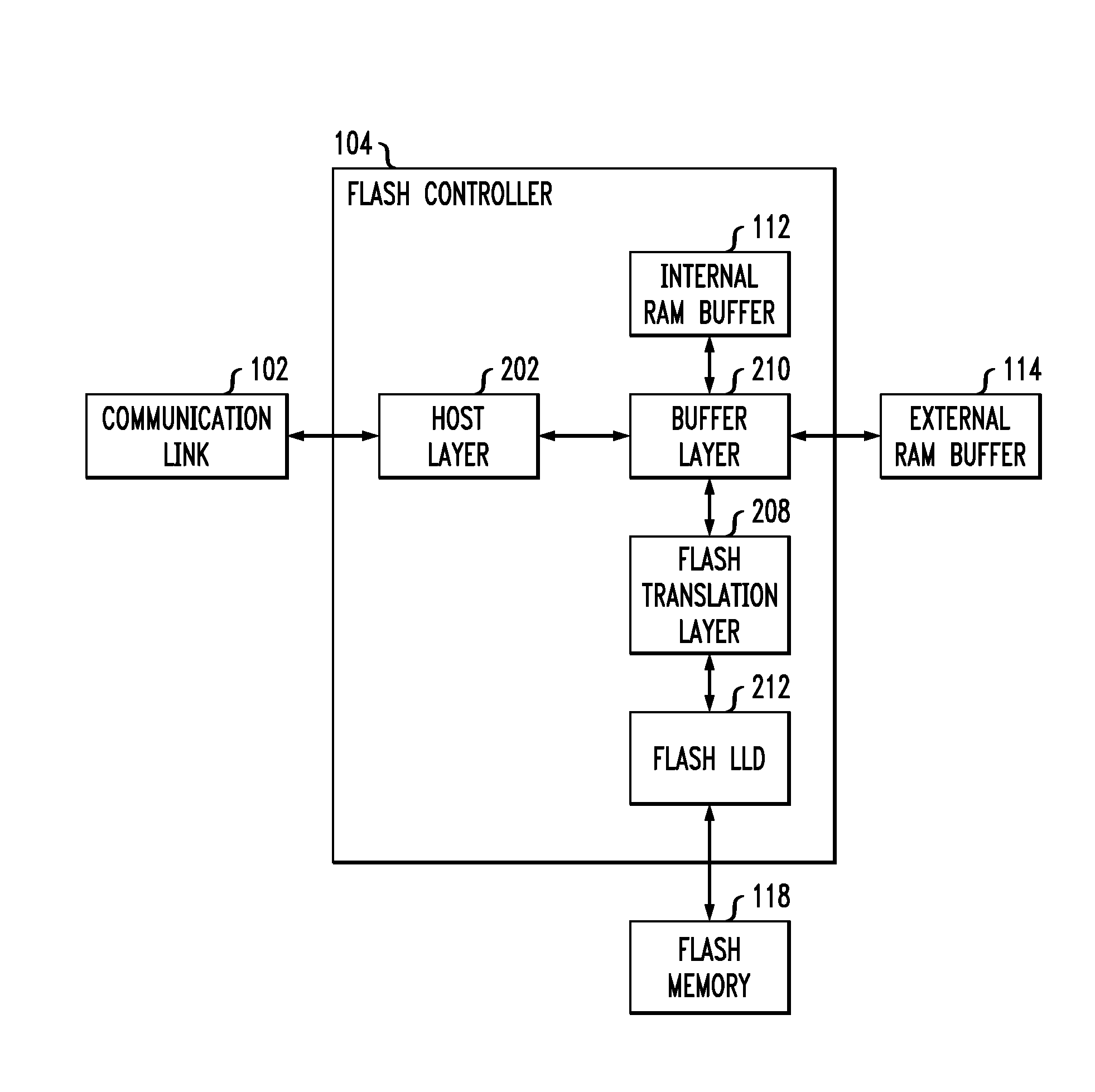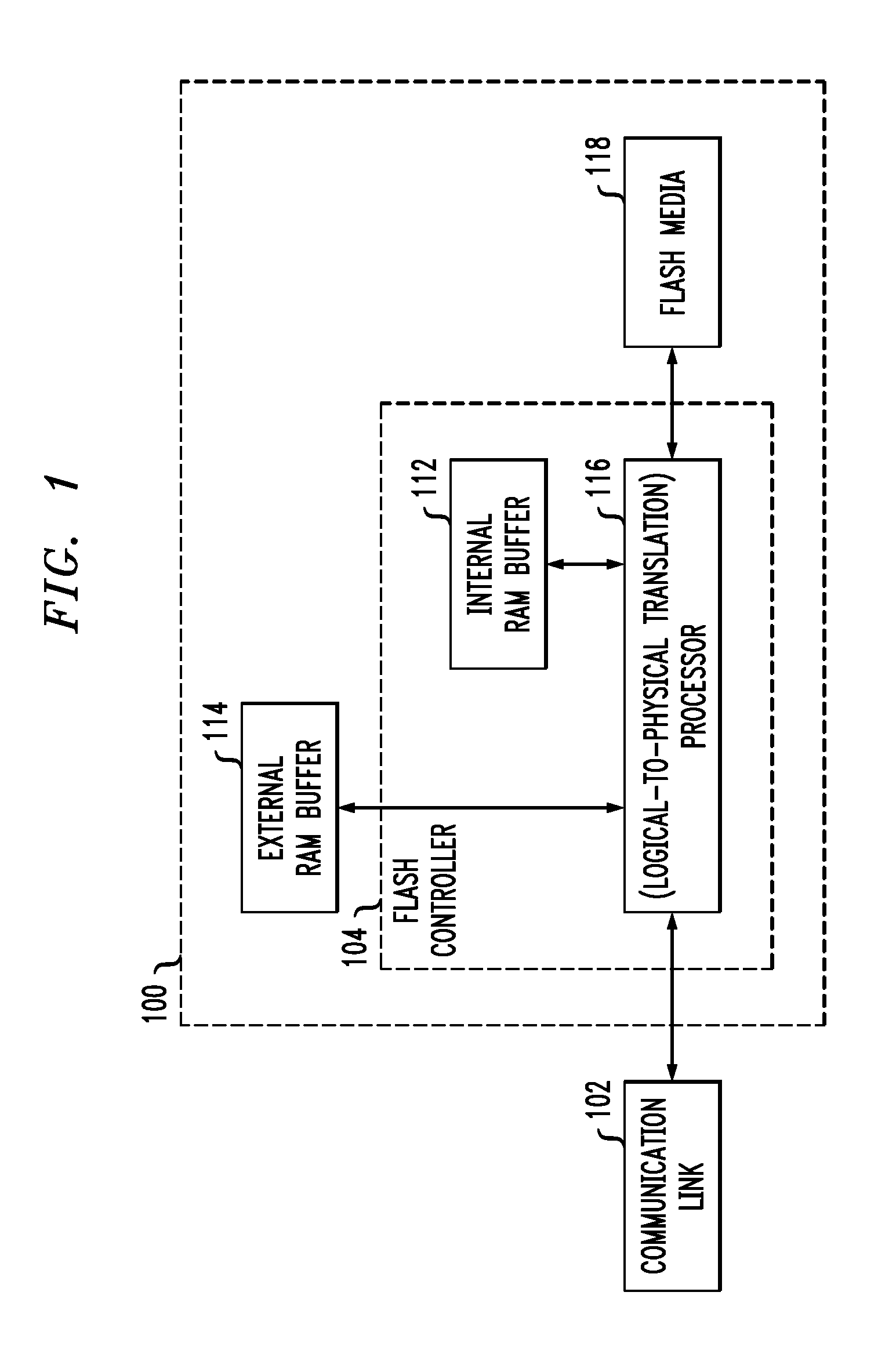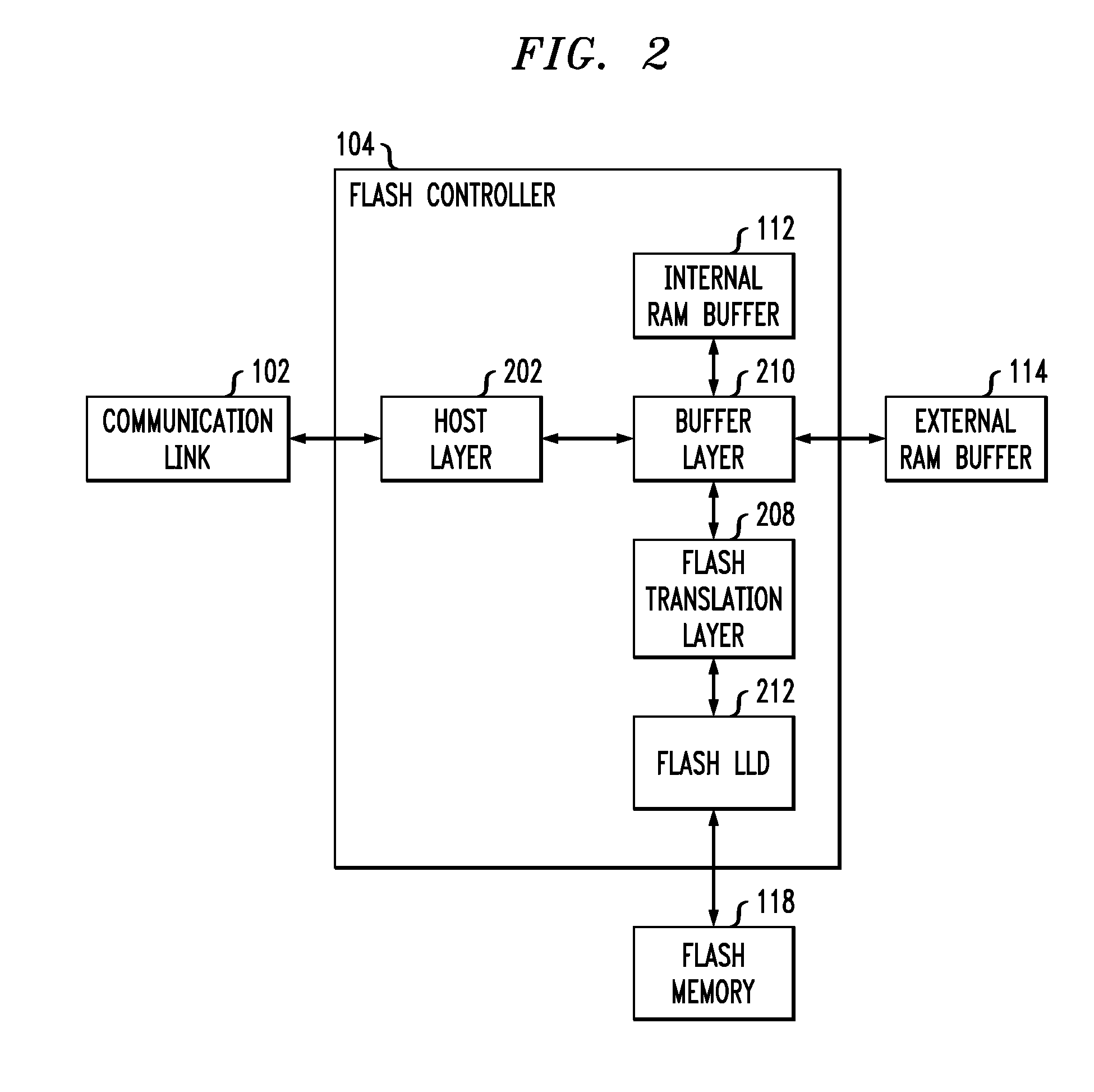Logical-to-physical address translation for solid state disks
a logical-to-physical address and solid-state disk technology, applied in the field of flash memory storage devices, can solve the problems of not providing full address and data bus capability, not allowing random access to memory locations, and additional bytes of memory, and achieve the effect of reducing the number of erasures
- Summary
- Abstract
- Description
- Claims
- Application Information
AI Technical Summary
Benefits of technology
Problems solved by technology
Method used
Image
Examples
Embodiment Construction
[0055]In accordance with embodiments of the present invention, a flash memory storage system is provided. The flash memory storage system employs logical-to-physical address translation to track when new data for a given logical block address (LBA) is written to an erased page that is a different physical page than the page previously used for that LBA. Embodiments of the present invention describe a flash memory storage system for use in Solid State Disk (SSD) applications, as well as in hybrid magnetic and solid state storage systems. In contrast to existing approaches in flash memory storage systems employing one of i) direct page mapping, ii) block mapping, and Superblock mapping for logical-to-physical address translation, embodiments of the present invention employ page level mapping with a superblock structure, allowing a logical page to be stored to any physical page within a superblock.
[0056]To provide efficient flash media write operations, an active block table might be e...
PUM
 Login to View More
Login to View More Abstract
Description
Claims
Application Information
 Login to View More
Login to View More - R&D
- Intellectual Property
- Life Sciences
- Materials
- Tech Scout
- Unparalleled Data Quality
- Higher Quality Content
- 60% Fewer Hallucinations
Browse by: Latest US Patents, China's latest patents, Technical Efficacy Thesaurus, Application Domain, Technology Topic, Popular Technical Reports.
© 2025 PatSnap. All rights reserved.Legal|Privacy policy|Modern Slavery Act Transparency Statement|Sitemap|About US| Contact US: help@patsnap.com



